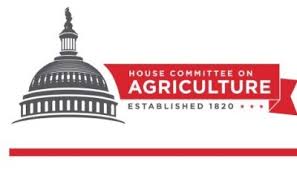Opening comments from House Ag Chair, Mike Conaway
There is perhaps no current public policy proposal that commands more bipartisan public support than the idea of rebuilding America’s public works. We’ve all heard the news reports about the impact aging infrastructure has on our ability to trade, travel and communicate. But perhaps nowhere is the need to renew our infrastructure greater than in America’s heartland.
Many Americans are familiar with the crumbling bridges and buckling roads that are highlighted in news stories. And the tragic crisis in Flint has brought into sharp relief the urgent need to upgrade our water supply infrastructure. Like urban America, rural America has its share of roads, bridges, and water systems in need of repair. But we face unique challenges that are different from our neighbors.
Rural America produces commodities, those fundamental products on which we build our modern economy. We produce food, fiber, energy, ore, lumber, and everything else that gets put into the products made by our factories – factories that, in many cases, reside in urban America. And transportation is the lifeline that facilitates this partnership. If we cannot get commodities to market, urban manufacturing centers and rural communities alike face challenges producing the very “made in America” products that create the jobs and grow our economy. Because of that, transportation infrastructure looms larger in rural America. It’s not just roads and bridges, it’s also locks and dams and railways and pipelines that allow our products to travel to the cities where they are needed. “Made in America” depends on the transportation networks we have built in rural America.
Like transportation, improved communications technology remains a tremendous need in rural America. Here in this room, we take for granted the awesome power of smartphones. Universal, instantaneous access to the internet has become essential to our lives. And as communications technology races ahead, we need to ensure rural Americans are not being left behind.
Further, many of the gains in rural America over the past 100 years have been due, in part, to the public investments made in agricultural research. As we have heard before, the infrastructure on which our world-class agricultural researchers rely is outdated and crumbling, even as other countries make significant investments.
At the root of many of these problems, is the need for capital to be invested in rural America. Our shifting population, moving out of rural counties and into urban and suburban counties, is also shifting the tax base, making it difficult for small communities to finance the upgrades they need to continue to be competitive in the modern economy. It is a cycle that seems unbreakable – services are lacking, so families move out; as families move out, the tax base shrinks; as the tax base shrinks, services must be curtailed and upgrades must be postponed.
While it’s tempting to think this is a local problem, it is not. Our modern economy is built on the free movement of goods and ideas. We cannot grow our nation’s economy if 50 million rural Americans are unable to participate.
For 200 years, Congress has debated federal financing of waterways, highways, electric systems, telephone lines and research infrastructure. Across all of those debates, we have long understood the need to continue to pull all Americans further into the networks of commerce.
I applaud the president for drawing attention to this important issue. Today, we are fortunate to hear from six of the over 200 organizations participating in the Rebuild Rural Coalition, and I want to thank them and many other coalition partners for joining us here today. It is important that your members—our constituents—are a part of this process.

